A small guide to a big future ? Brain Computer Interfaces
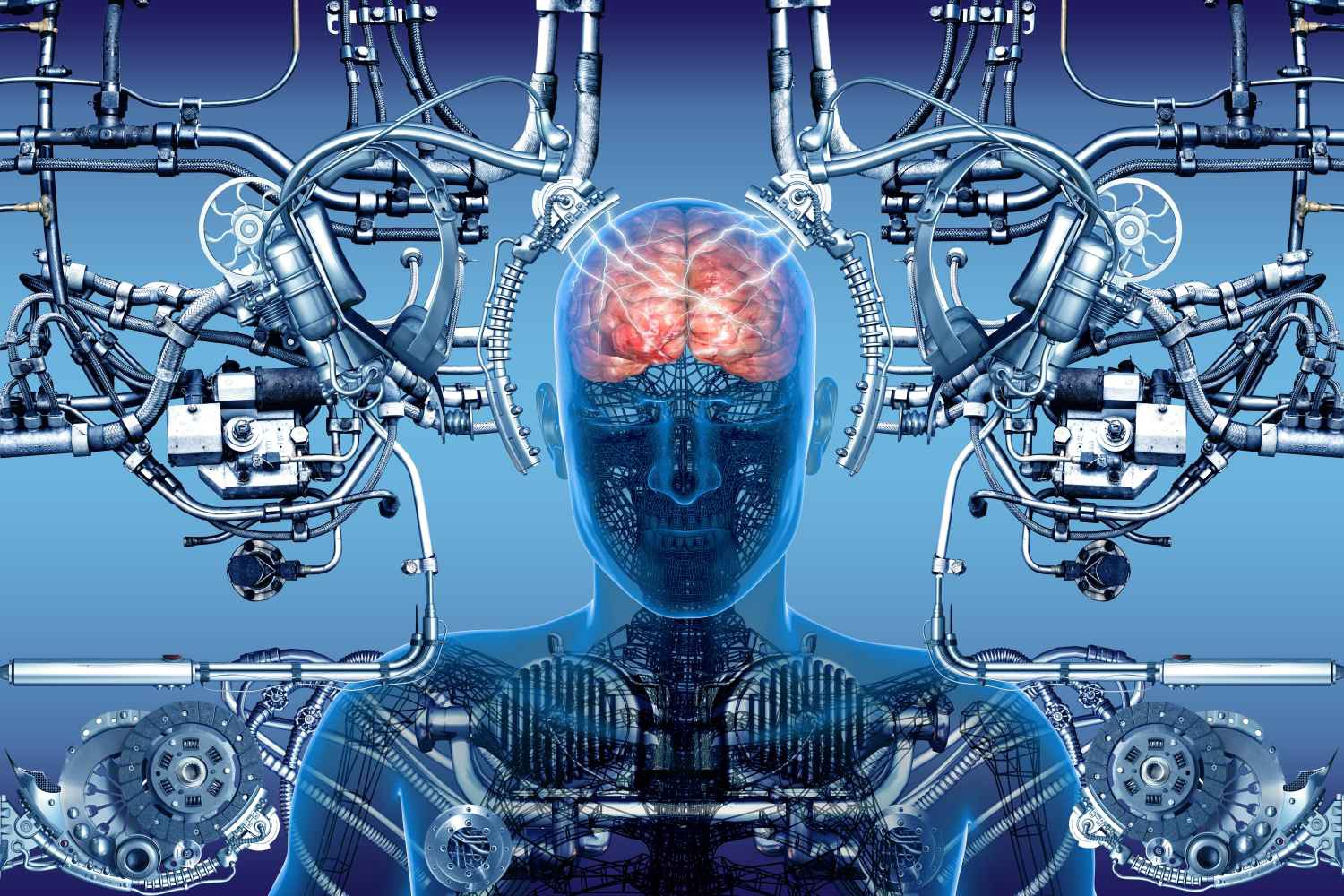 Image credits: Convergent science network.
Image credits: Convergent science network.
This is Part 1 of the Series, stay tuned for the next part!
Introduction
So you made your way to this article, but how did you do it? Did your motor cortex fire up the muscle fibers in your arm to move the mouse and use the keyboard to type on the screen and hit ENTER, pushing the hi-tech processor in your computer to fetch this page?
Not far from now, that could all seem out of date. That?s because many smart inventors are investing big time and money into computers that can read your thoughts in real time. The ultimate goal is to create super-machines that know what you want before you figure out yourself.
The three T?s of the future ? Telepathy, Telekinesis and Teleportation
Telepathy is the ability to transmit words, emotions, or images to someone else?s mind.
Telekinesis is the ability to move objects through mind power.
Teleportation refers to transporting yourself or your mind to a location miles away from you in fraction of seconds.
Though many people believe in such psychic ability, scientific evidence for its existence remains still very elusive.
The highest form of ignorance is when you reject something you don?t know anything about.
– Wayne Dyer
Early 2017 has been an exciting time for brain-computer interface (BCI) development. Major players in the tech industry have announced their involvement in the field- Elon Musk announced his new venture Neuralink, which is fueled by the fear of humans being left behind by A.I., and several weeks later Facebook announced their own efforts led by DARPA?s Regina Dugan, with the goal of enabling users to type 100 words per minute using their minds.
But how far off might such a future be? Let?s take a look at the current state of these brain-computer interfaces, and the challenges that remain in getting them inside our heads.
But wait ! Before entering in this fictional yet real world of Brain Computer Interfaces, let us first understand what is exactly a BRAIN!
The Neuron and the Brain :
The human brain has 100 billion neurons, each neuron connected to 10 thousand other neurons. Sitting on your shoulders is the most complicated object in the known universe.
Around 600 million years ago, no one really did anything, as there was nothing to do, and also, there was literally nothing !
 Image Credits : waitbutwhy.com
Image Credits : waitbutwhy.com
The problem was that no one had nerves. Without a nerve, you cannot move, or think, or act. So you just had to exist, but not live, and wait there until you died.
And then came the jellyfish.
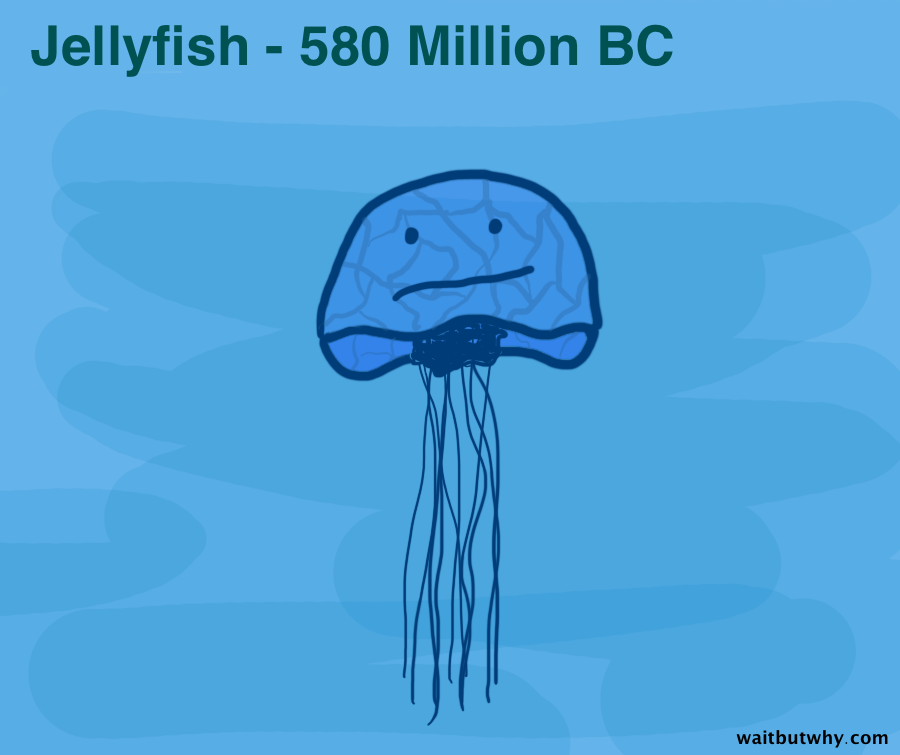 Image Credits : waitbutwhy.com
Image Credits : waitbutwhy.com
The jellyfish was the first creature to figure out that nerves were an important thing to make sure you had nerves. It had the world?s first nervous system ? a nerve net.
 Image Credits : waitbutwhy.com
Image Credits : waitbutwhy.com Image Credits : waitbutwhy.com
Image Credits : waitbutwhy.com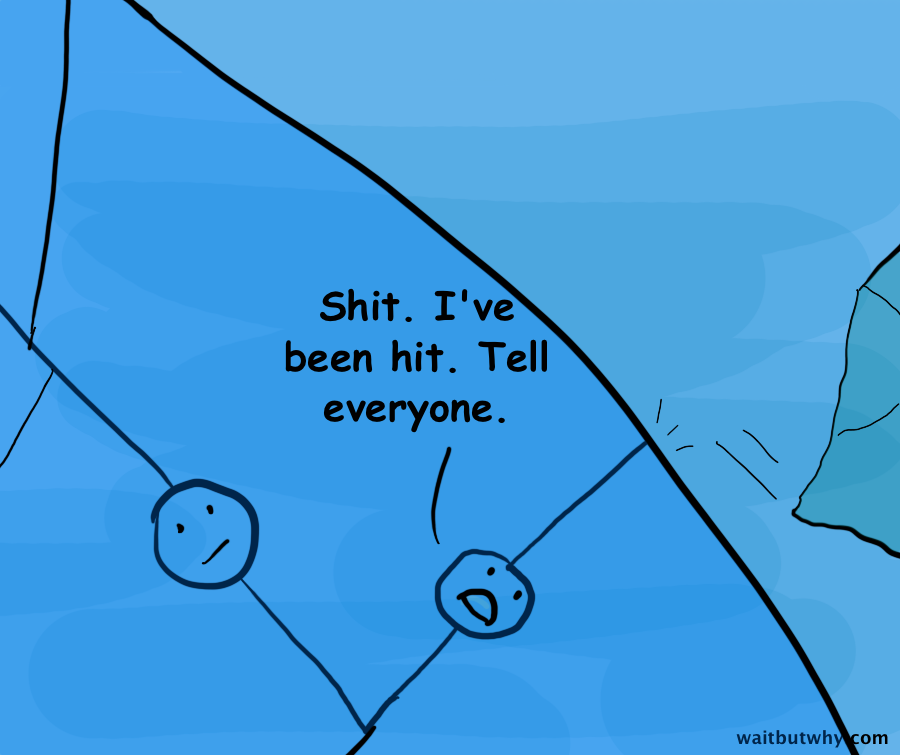 Image Credits : waitbutwhy.com
Image Credits : waitbutwhy.com Image Credits : waitbutwhy.com
Image Credits : waitbutwhy.com
The jellyfish?s nerve net allowed it to collect important information from the world around it ? like where there were objects, predators, or food ? and pass that information along, through a big game of telephone, to all parts of its body. Being able to receive and process information meant that the jellyfish could actually react to changes in its environment in order to increase the odds of life going well, rather than just floating aimlessly and waiting to die.
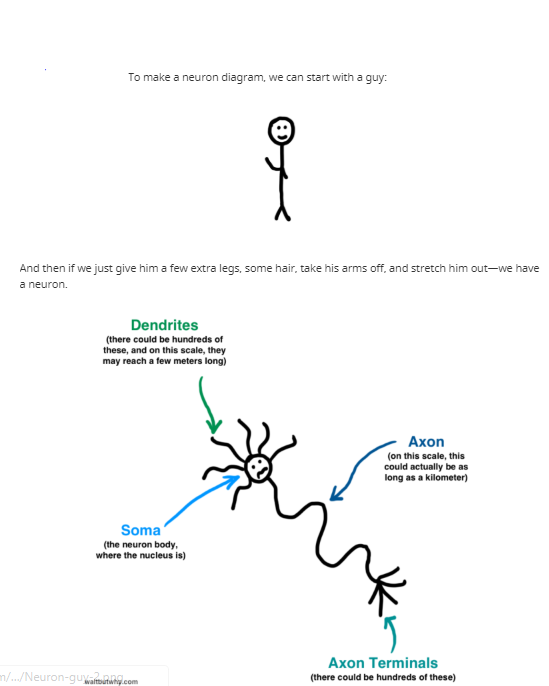 Image Credits : waitbutwhy.com
Image Credits : waitbutwhy.com
The Brain
Our brain is one of the most complicated organs of our body and so is one we know the least.
?If the human brain was so simple that we could understand it, we would be so simple that we couldn?t?
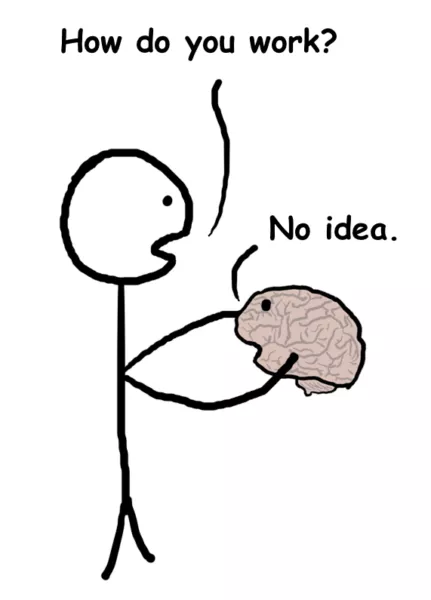 Image Credits : waitbutwhy.com
Image Credits : waitbutwhy.com
Accurate representation of knowledge of our brain (Image by Wait But Why)


The human brain is a wonderful organ. It starts to work as soon as you are born and doesn?t stop until you get up to deliver a speech.
Anyway, the practical reasons why it is so complicated to understand our brain are:
- It is made of 100 billion neurons;
- Every neuron is connected with 1000?10000 other neurons in a complicated network through which they exchange information to create all our memories, feelings, actions, etc? Multiply this connections? number for the 100 billion neurons and you obtain a network that is super complicated to be understood completely;
- There are not only neurons inside this mess, there are also other kinds of cells that help neuron in achieving their goals. There are bazillion microscopic elements even in a cubic centimeter of the brain;
- The connections between neurons change over time: if it wouldn?t, we would be always the same our whole life. But we learn, adapt, change behaviors and this happens thanks to little changes to our neural network: new connections emerge, older one?s break.
- Every brain is different, for instance how the word ?Man? is memorized in the brain is different from person to person. Unluckily there?s not an UTF-8 standard anywhere in the brain.
What is Brain Computer Interface ?
Simply put, a brain-computer interface is a way to connect the brain to an external device in order to send and/or receive information directly from it. They?re nothing new as research started in the early 70?s, so why are they gaining so much attention lately? What makes them so exciting?
You have around 86 billion neurons in your brain which control your whole body and generate thoughts in your head. These neurons fire with certain frequencies. The EEG headset reads these frequencies by reading the electrical activity that the neurons produce. Scientists have agreed to split these frequencies in different frequency bands. All the frequency bands have been studied intensively and are associated with several states of mind :
- Delta waves (1?3 Hz): Deepest meditation and deep sleep
- Theta waves (4?7 Hz): Normal sleeping and normal meditation
- Alpha waves (8?12 Hz): Relaxation/reflection
- Beta waves (13?30 Hz): Active thinking, focus, hi alert, anxiety
- Gamma waves (31?50 Hz): Conscious perception
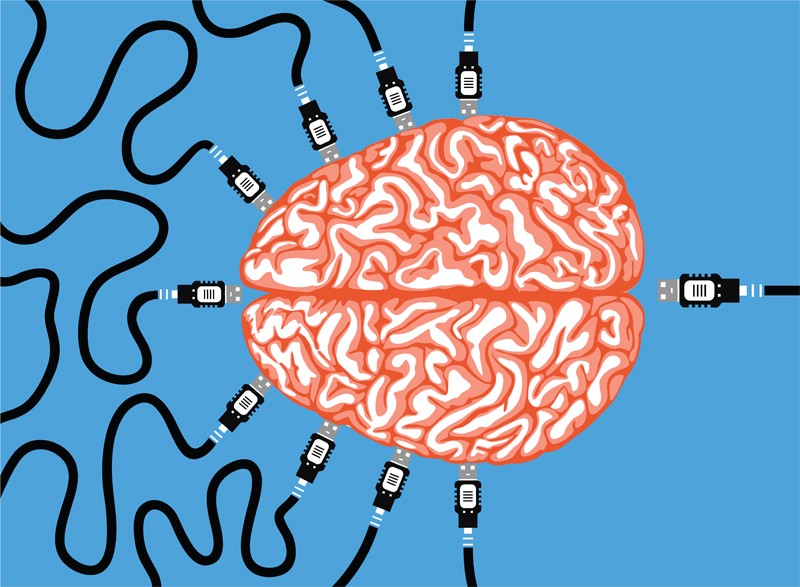 Image Credits : http://bcihub.com
Image Credits : http://bcihub.com
BCI?s Potential to Change the World
The successful implementation of the technology holds the potential to transform the technological world. Using this technology, wireless control of computers and devices will be possible. As a result, users will be able to command and control the technology in the same manner as they would move their hands and feet. Wireless communication, not just between people and machines but among people as well, will be redefined. With electrodes processing human brain functions, technology will be more perceptive to human emotions. Consequently, this will allow robot helpers and AI to be more perceptive and adaptable. Gaming experience for gamers around the globe will undergo a revolution. The experience that a computer integrated directly with the human brain can provide will be far greater than any gaming module.
Prosthetic limbs for the disabled will receive a major fillip with this technology. Thanks to the connection between the brain and the robotic limb, the feeling would be far more ?natural?. The connection may even incur feelings equivalent to the real limb.
And the final future?
Our brain goes faster than our body: it is like a CPU that finds that all other components of the PC are so damn slow. The body is a limitation for our brain. It can unleash all its potential with a brain interface, like in a dream, like in VR.
Why would we need to still have a body?
 Image credits : Futurama Wikia
Image credits : Futurama Wikia
Futurama predicted it: we could live only with our heads
The final stage of full dive VR is The Matrix. We could enter a simulation with all our body and see it as true life and inside this simulation we could do whatever we want. We could have endless possibilities, since in a simulation there are no rules to follow. So it can also be more than The Matrix: in The Matrix people are just people in a physical world? why should we have it? We could fly? we could have six legs? as long as the brain+the AI can think about something, that thing can happen. In the end BCI will make VR possible without a headset? just by injecting sensations in our heads. VR could become our life. Or our lives? being a computer we could live various lives in parallel, who knows. It all depends on what this super-brain can handle. And maybe thanks to the smart AI that will coordinate us through our fourth brain level, we will start thinking about living in love with each other, so that we?ll stop killing each other as in all those years. It?s all a mind-bending thought, but it could be the final evolution of humanity. Fermi?s paradox says that we haven?t still met aliens because they don?t need to live in the physical world anymore: they evolved so much that they live in a full dive VR all the time. This could be the case for us as well.
Maybe it will be an amazing future. Who knows, but I?m still too much in love with this simple and crazy world. When in Deus Ex I had the opportunity to give full control of humanity to a wise AI, that could make the Earth a perfect and peaceful place, I preferred making the humanity return to the middle ages activating a technological blackout (that destroyed the AI, too). I love being so deeply human, free to be myself.
This is Part 1 of the Series, stay tuned for the next part!

This story is published in The Startup, Medium?s largest entrepreneurship publication followed by +402,714 people.
Subscribe to receive our top stories here.



